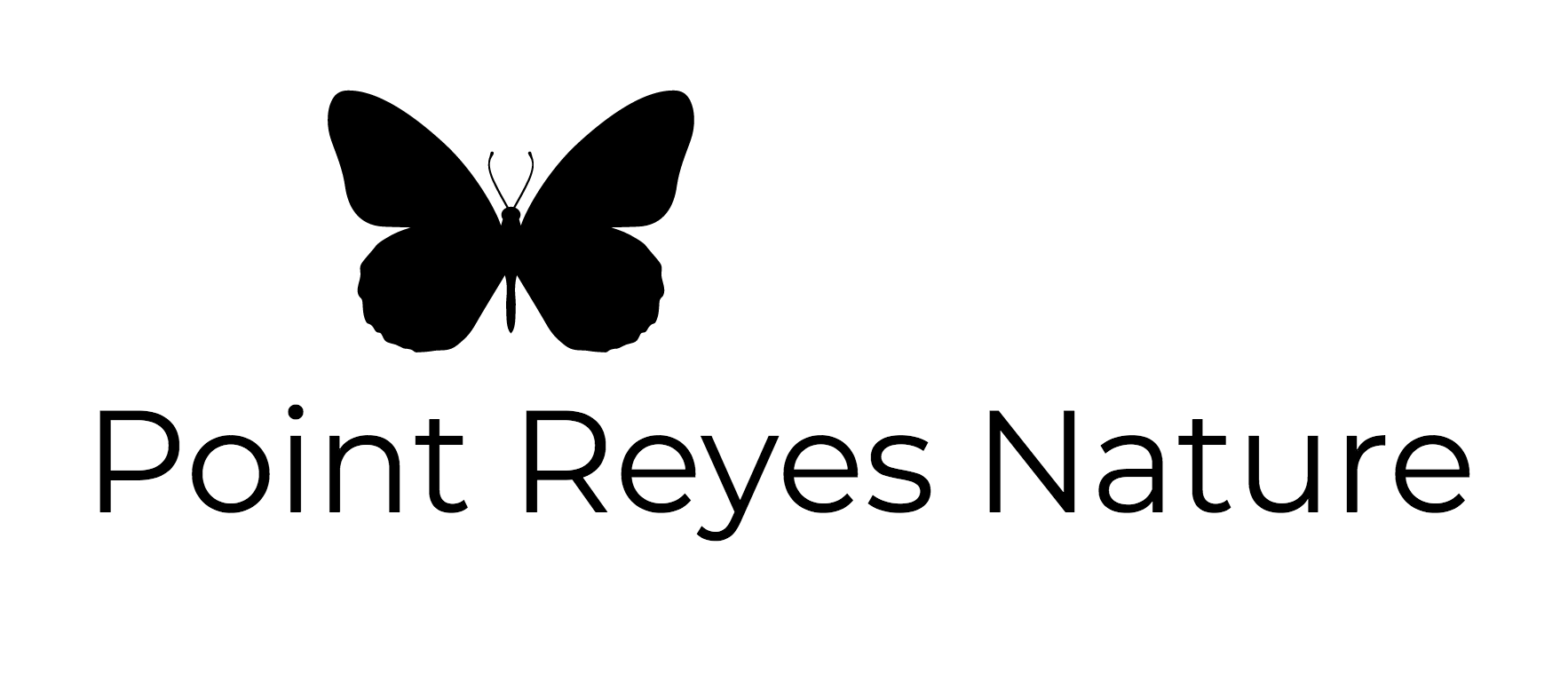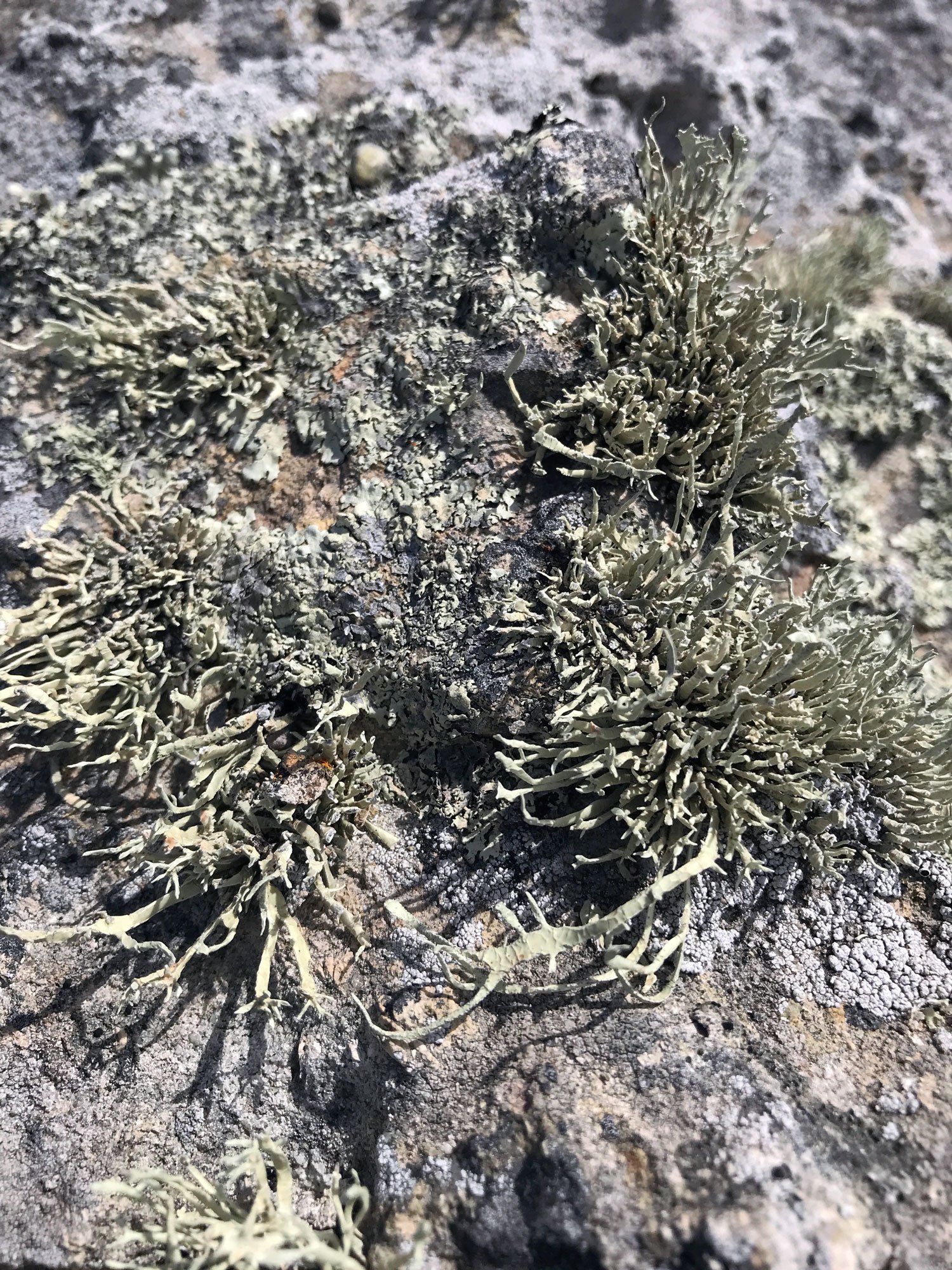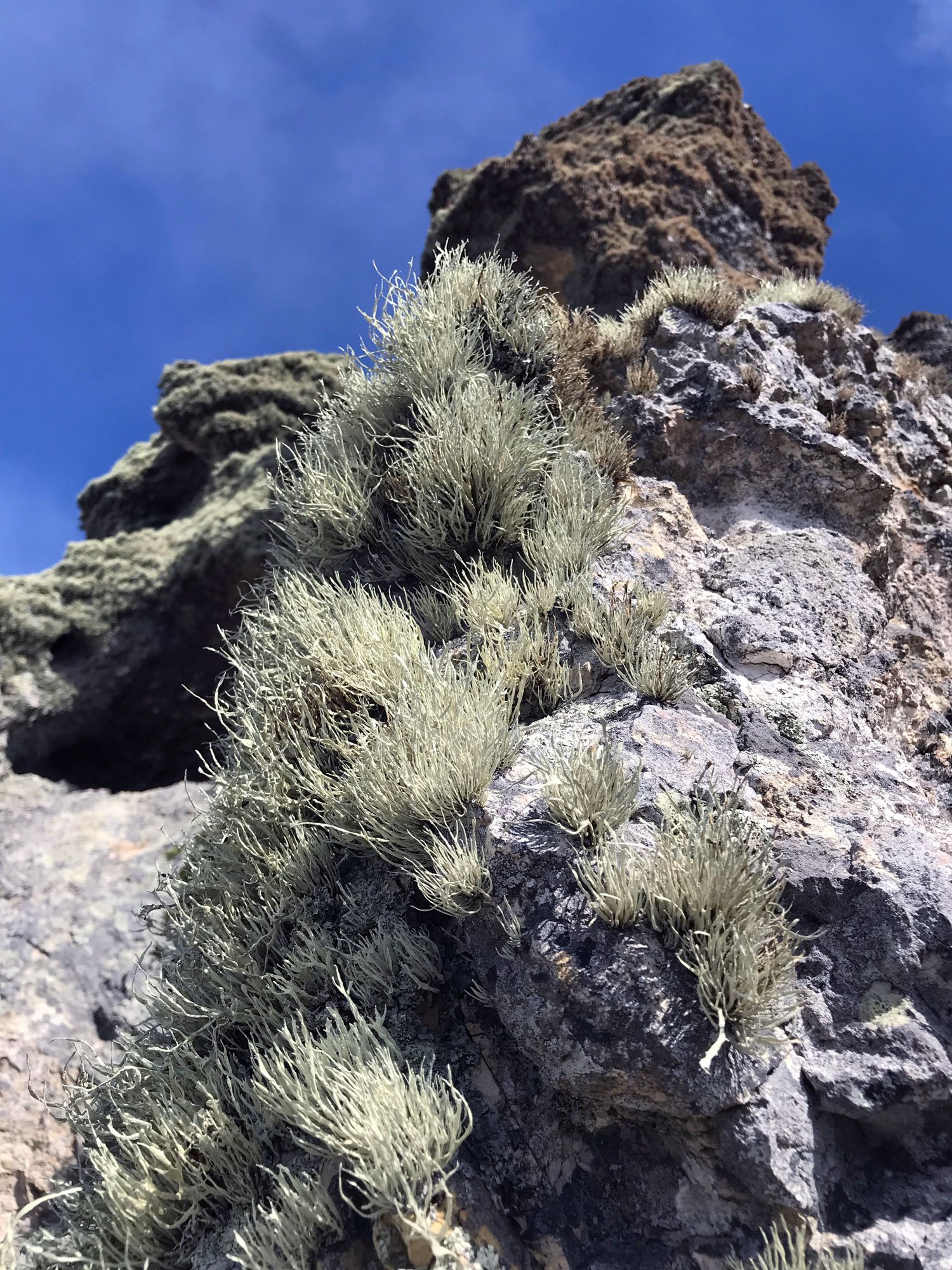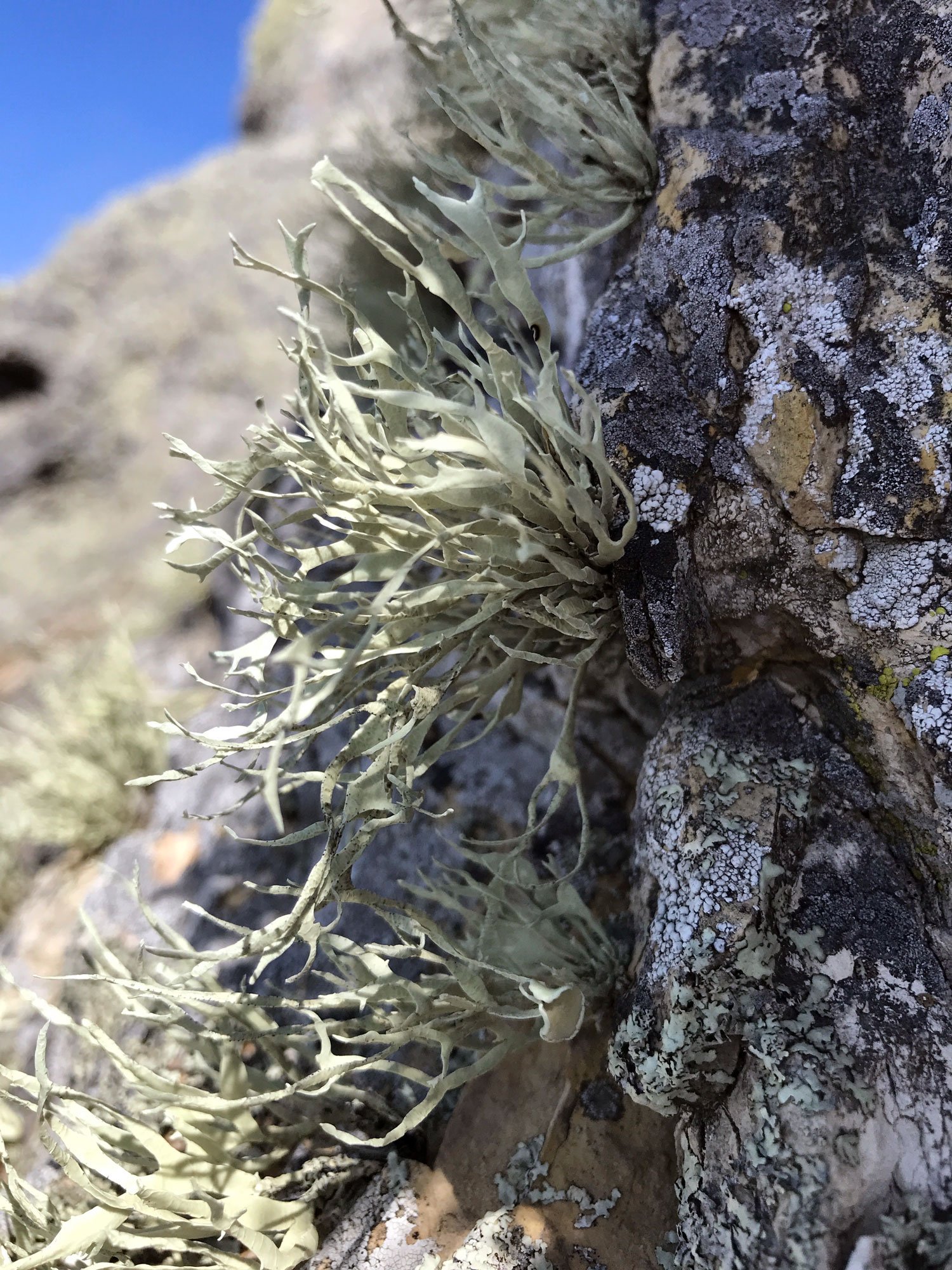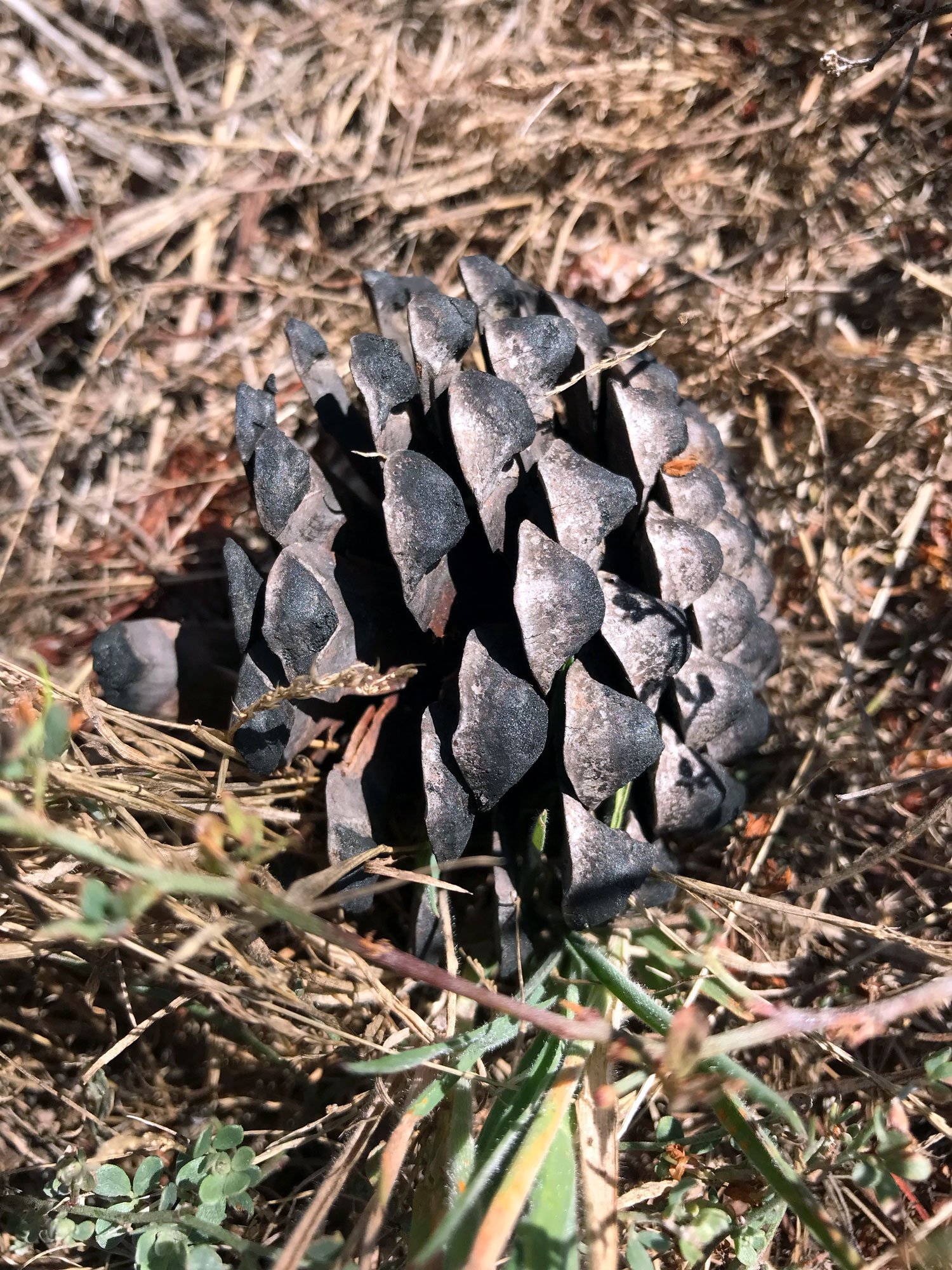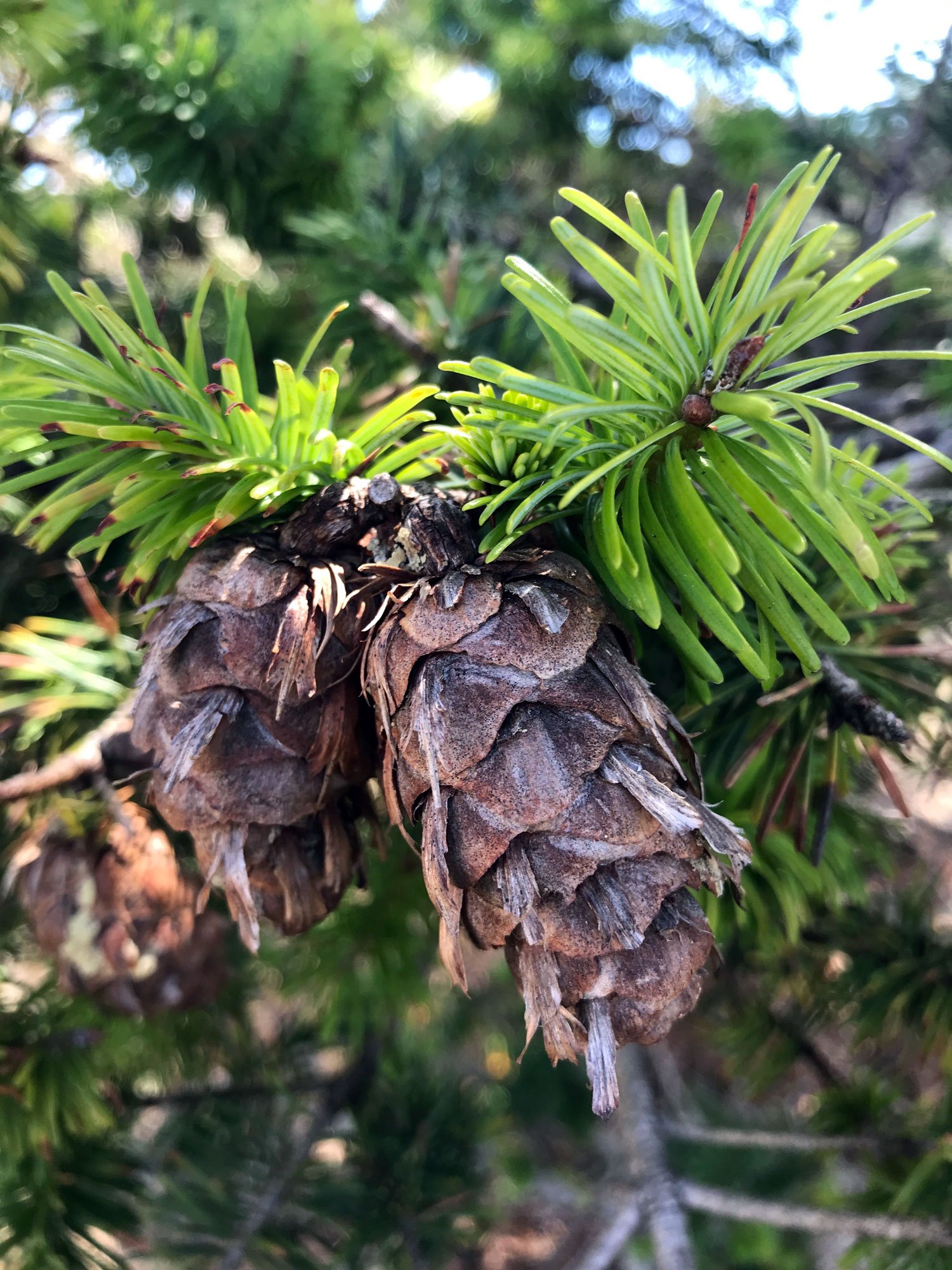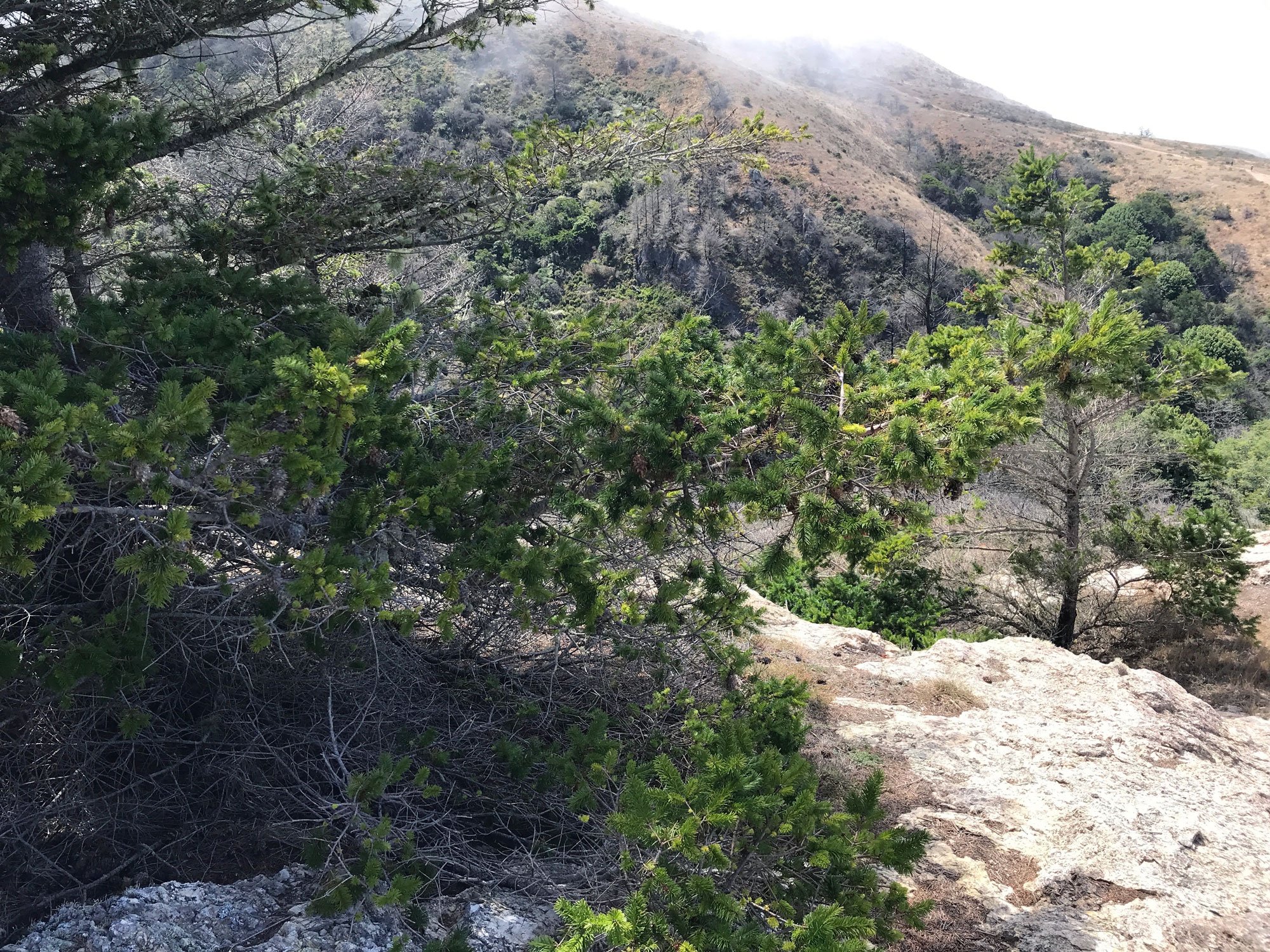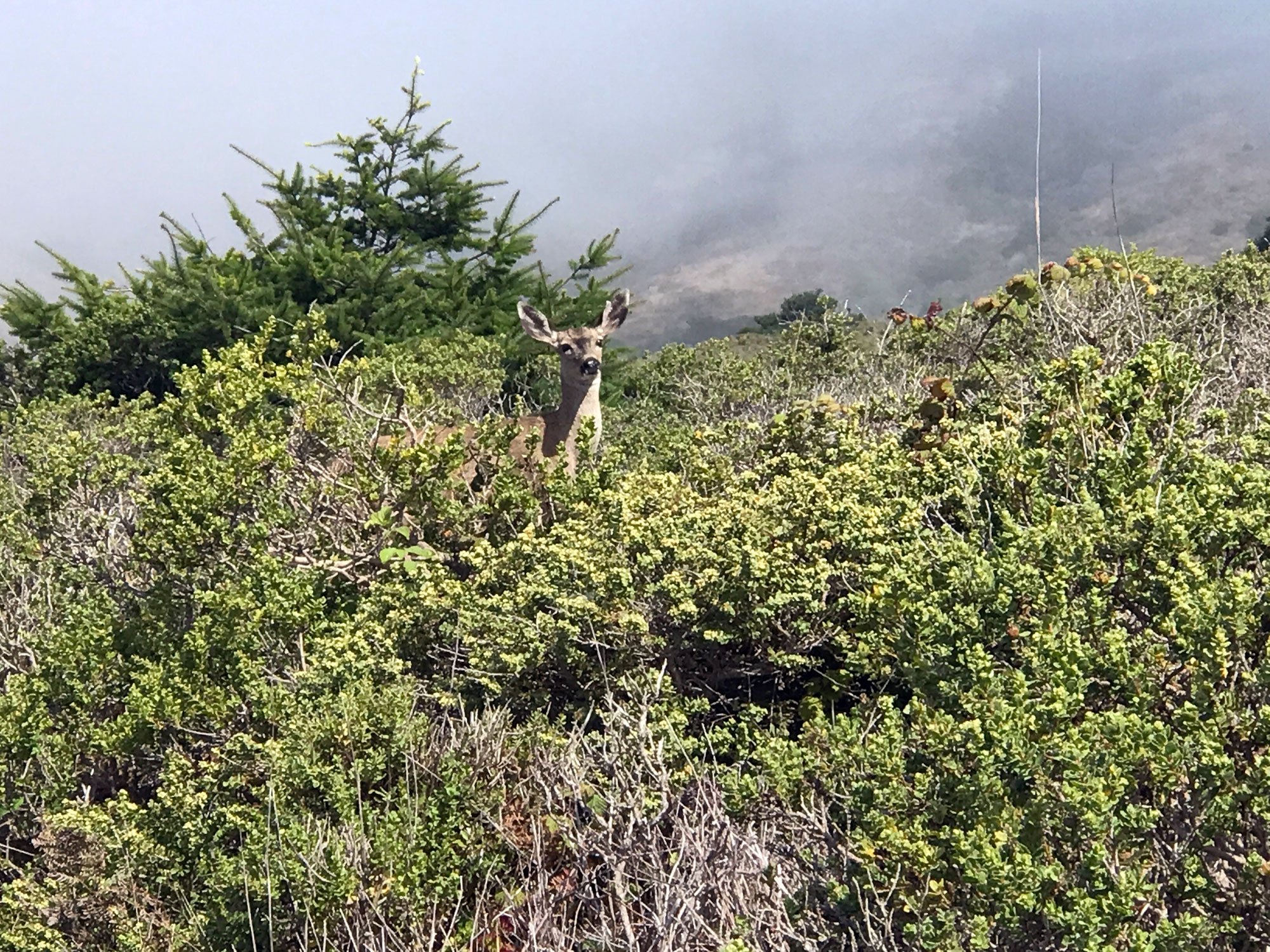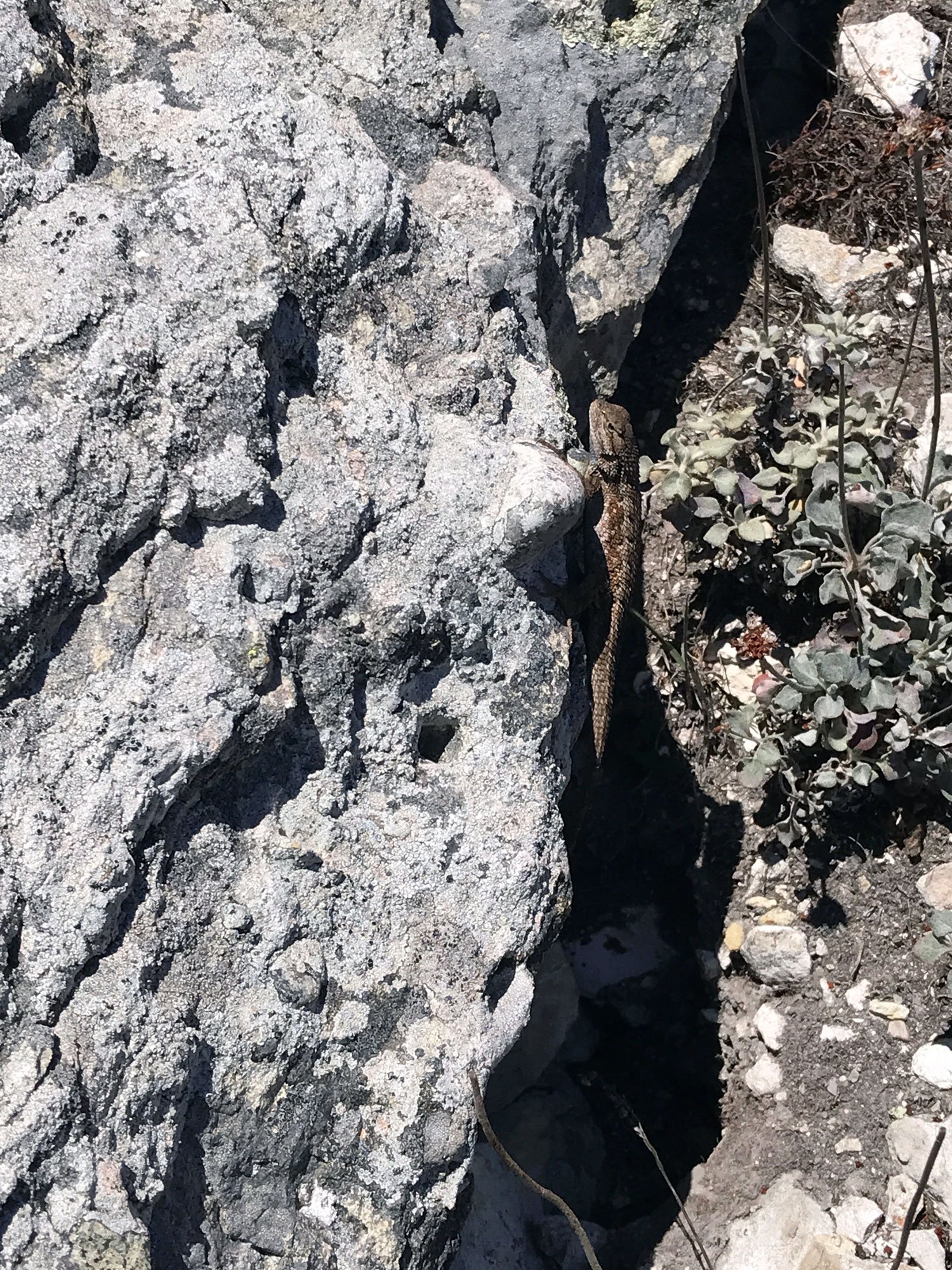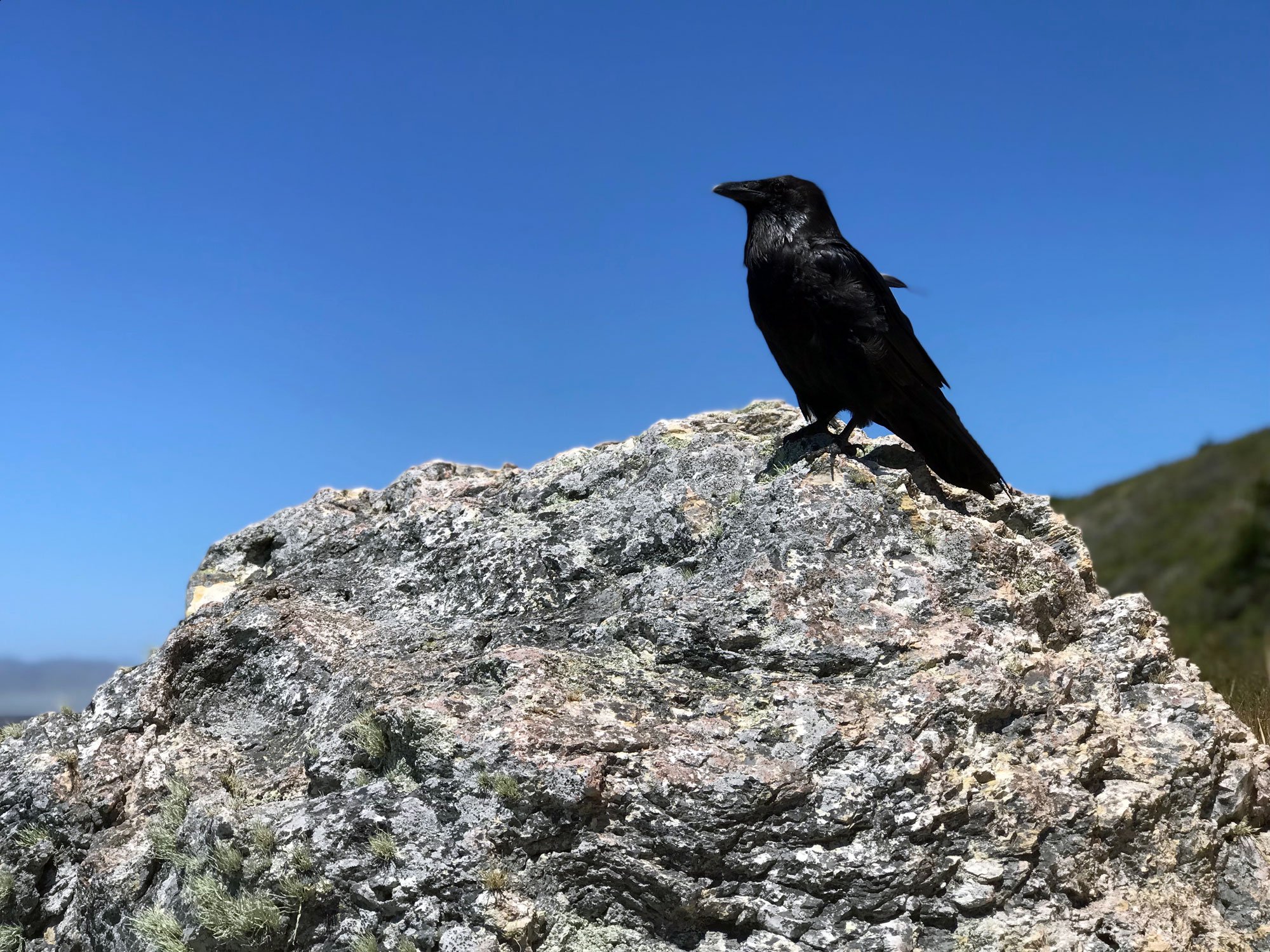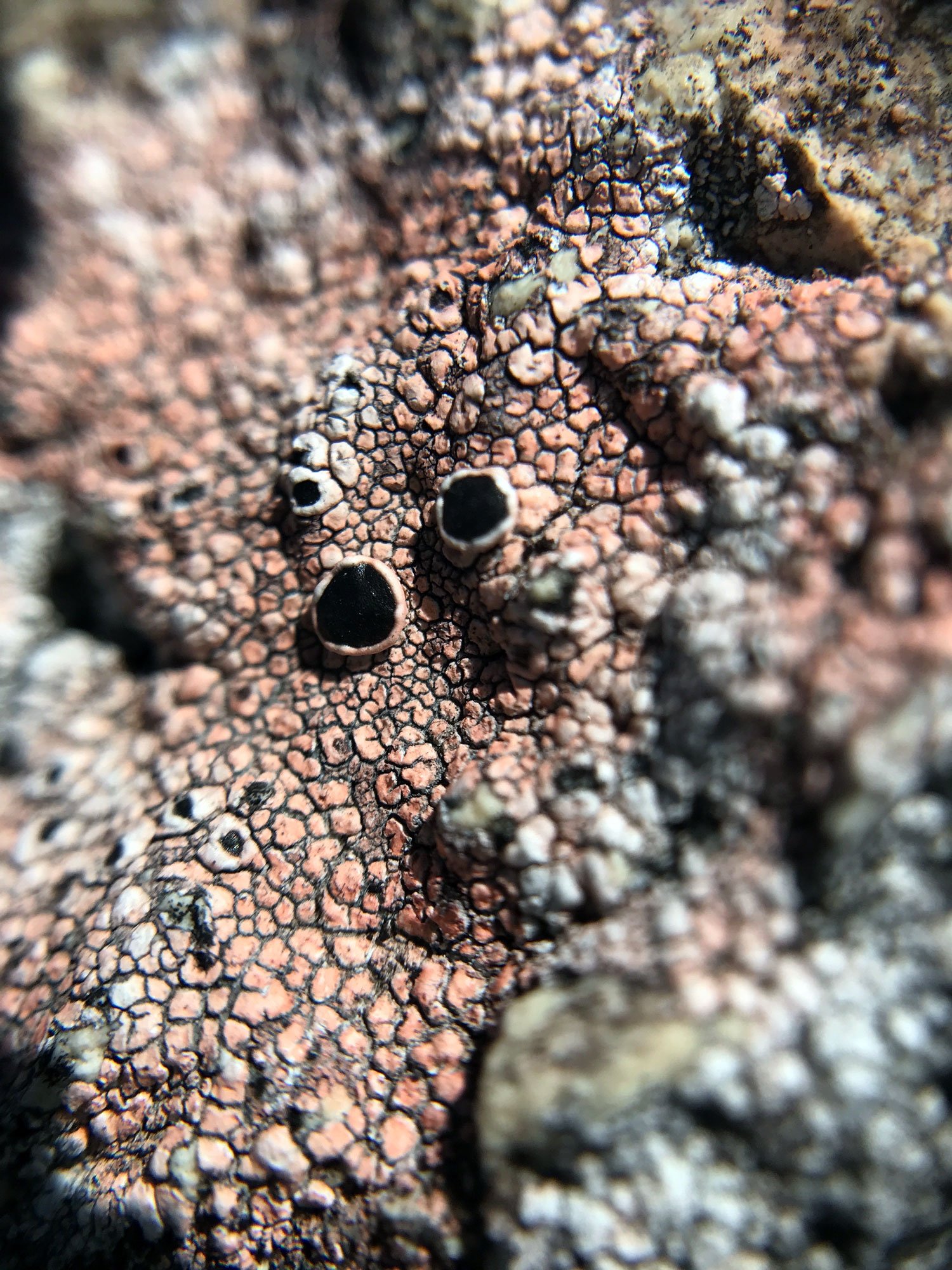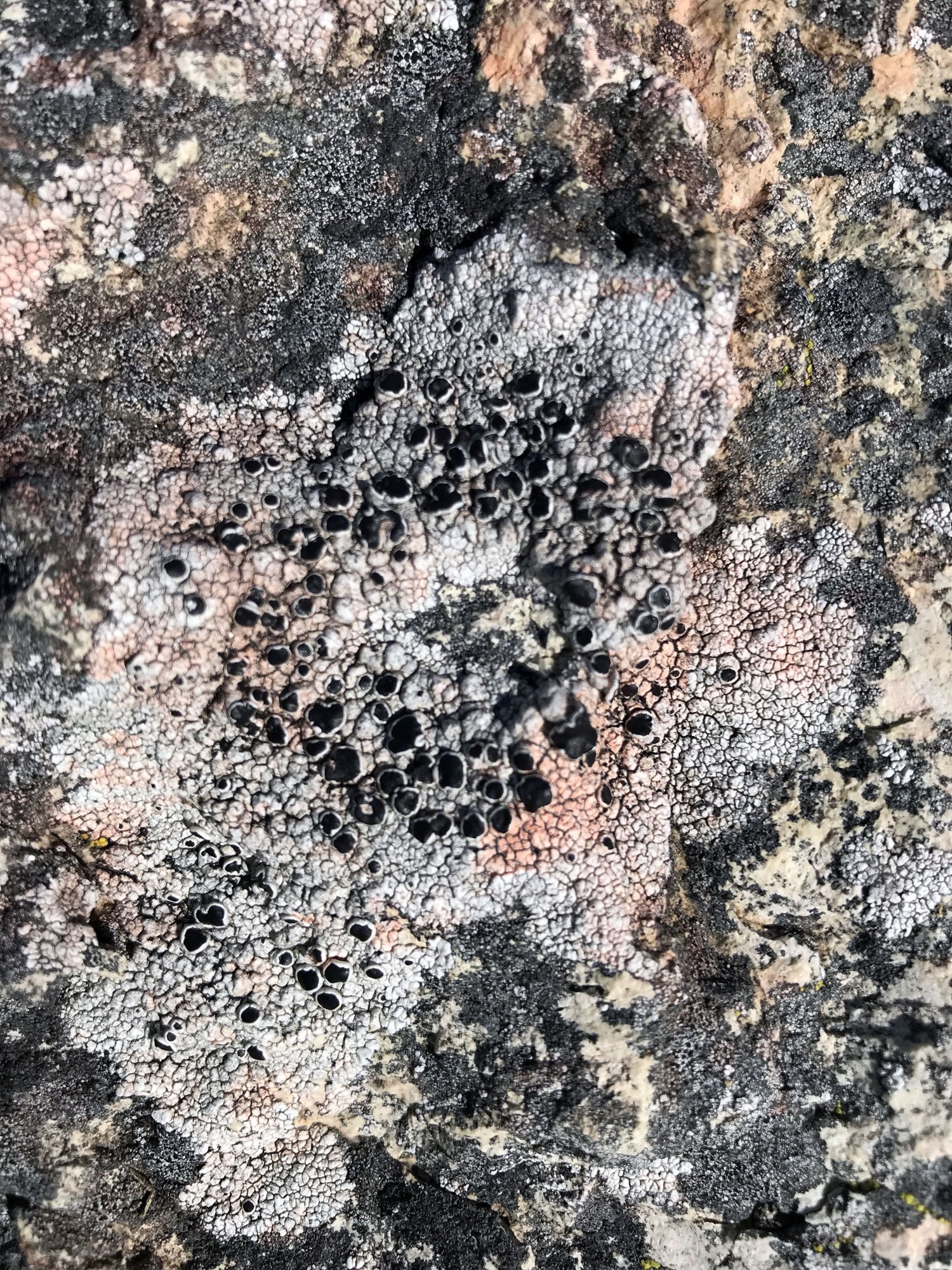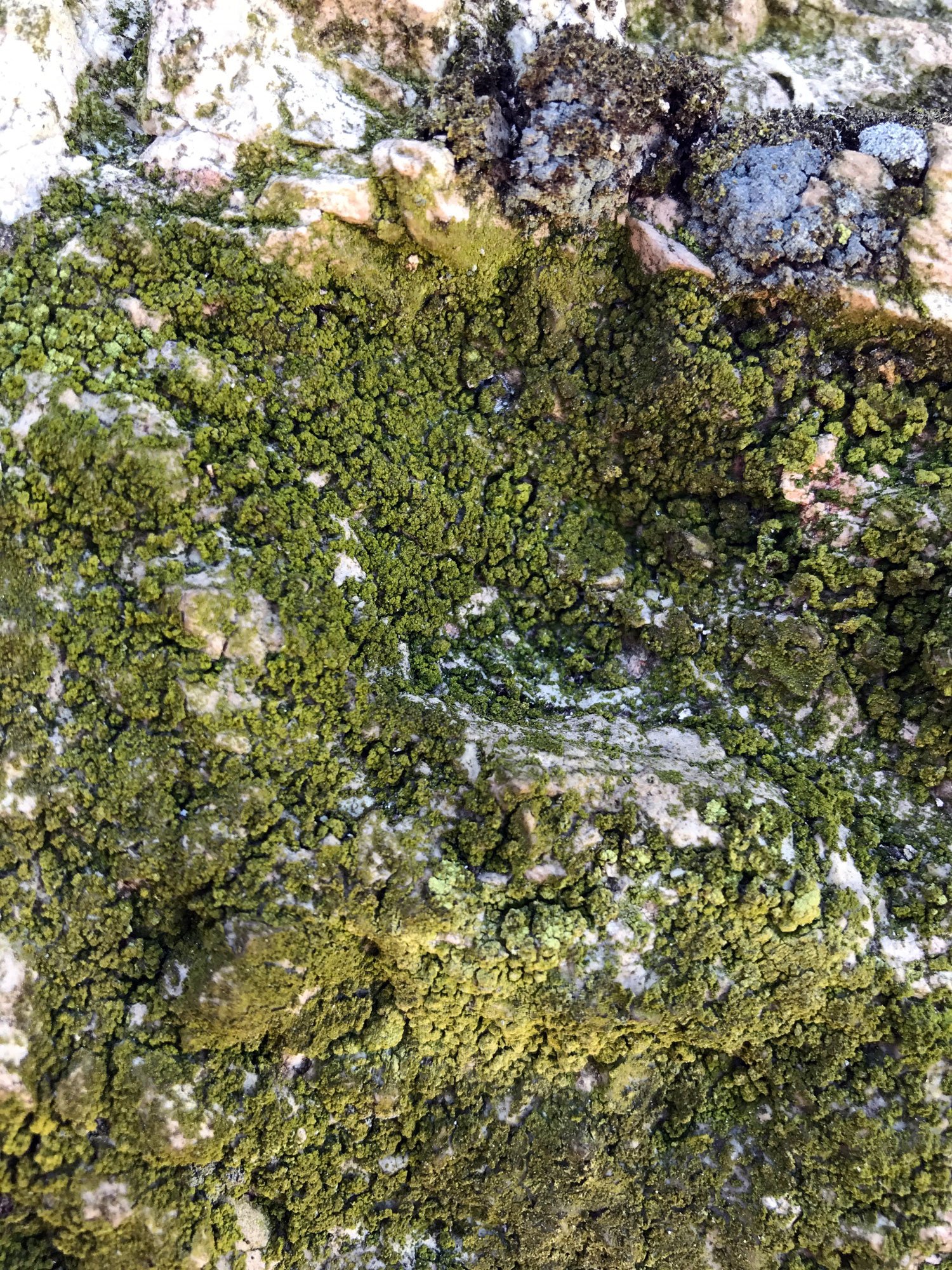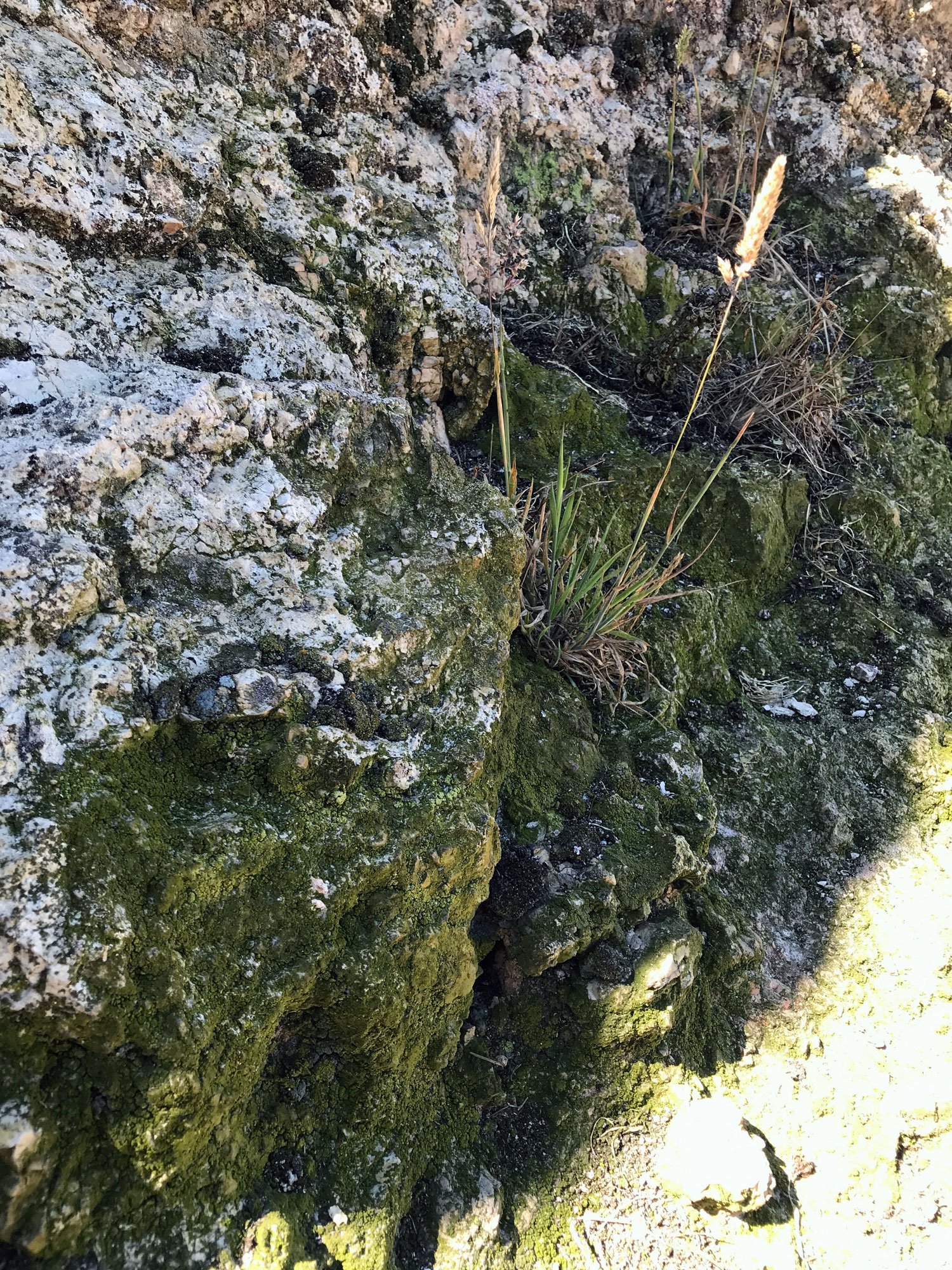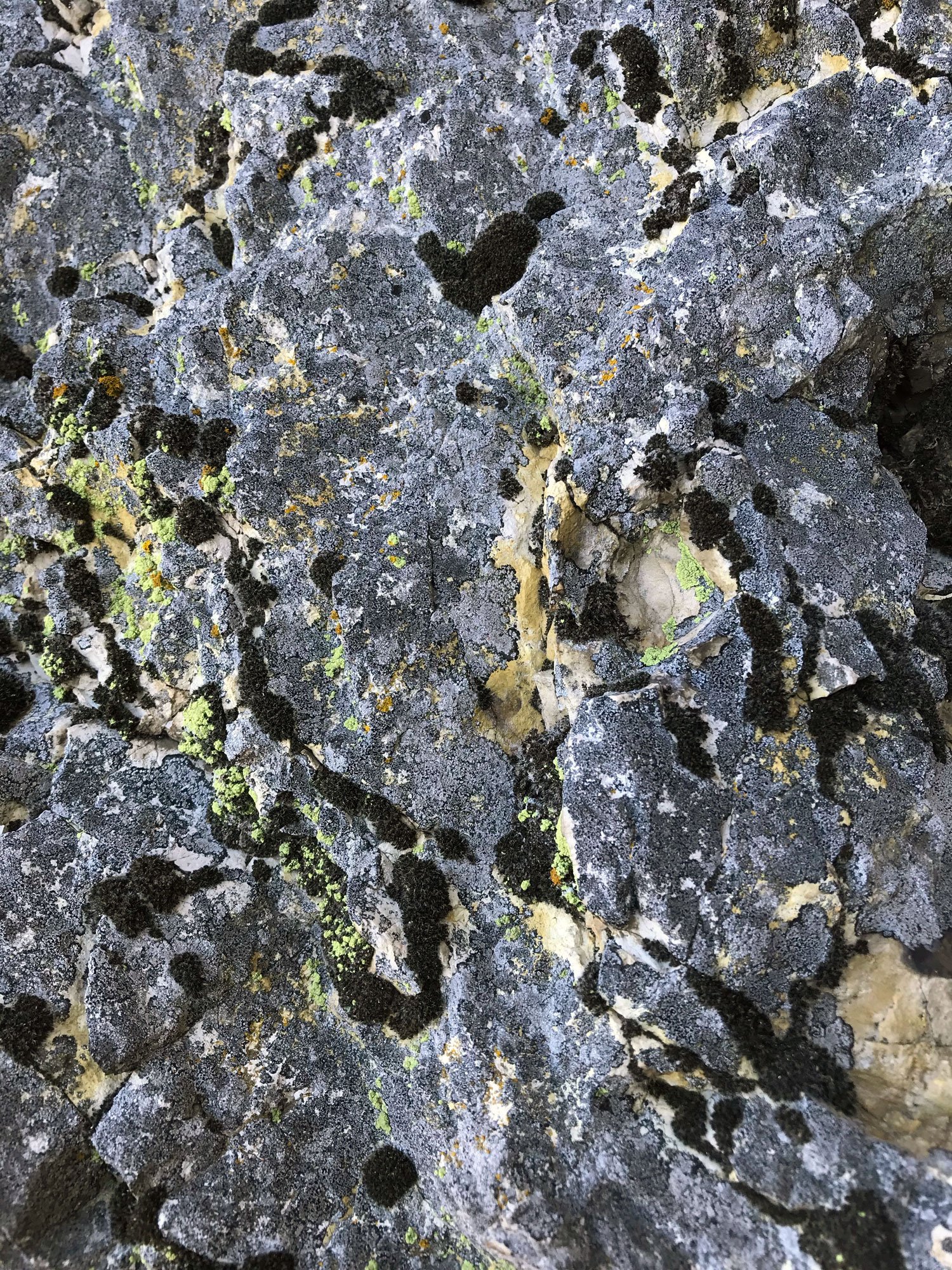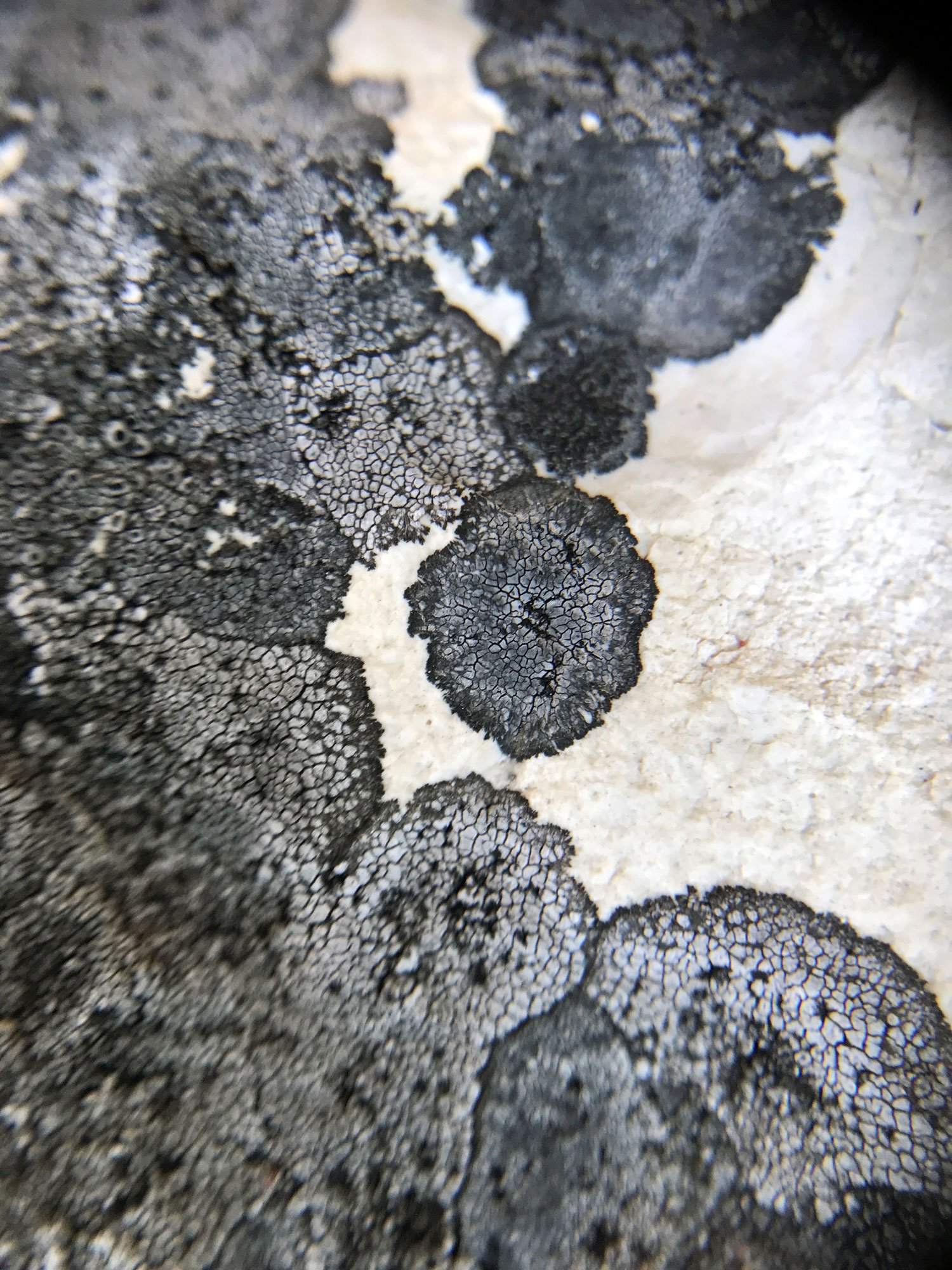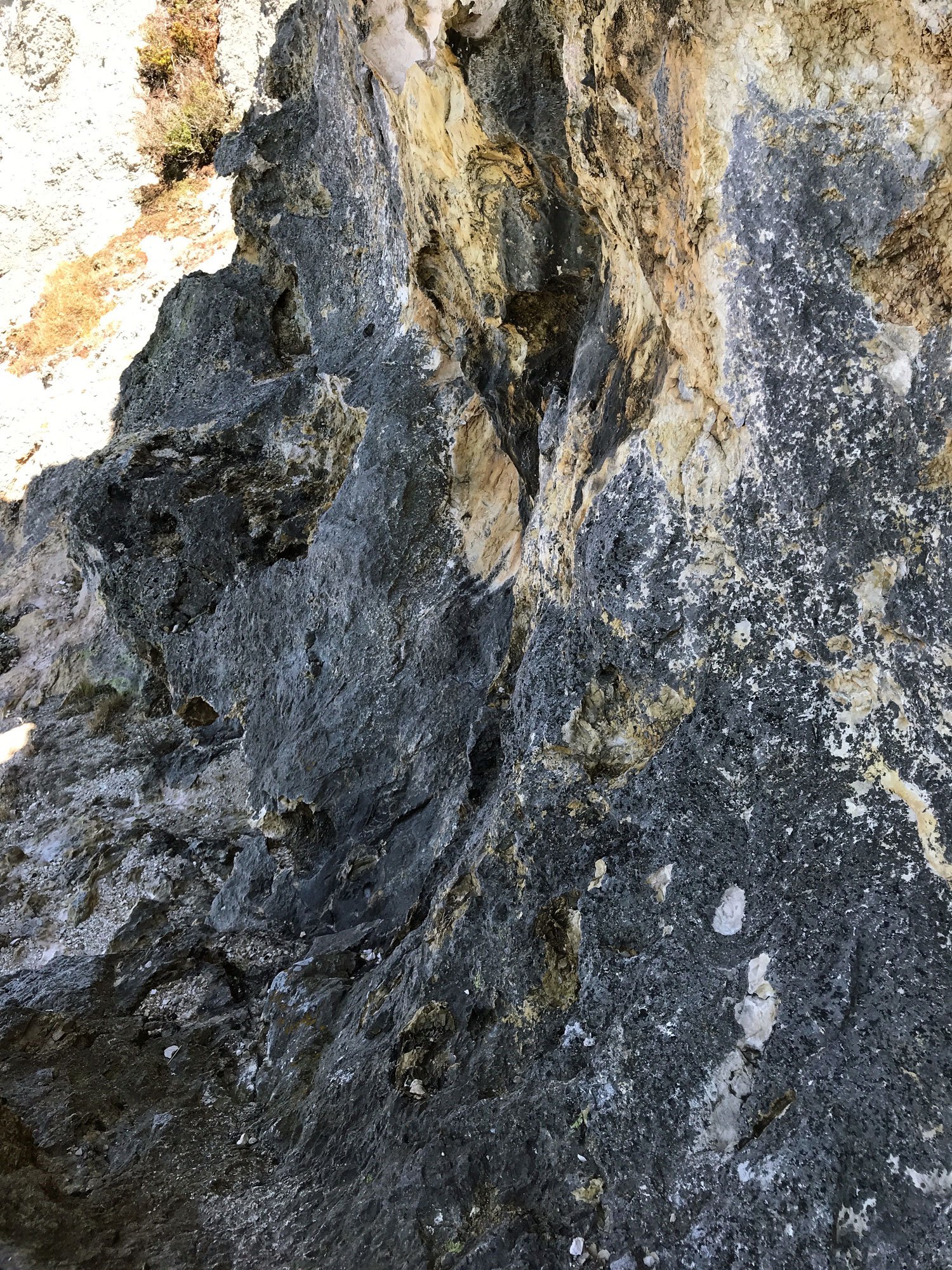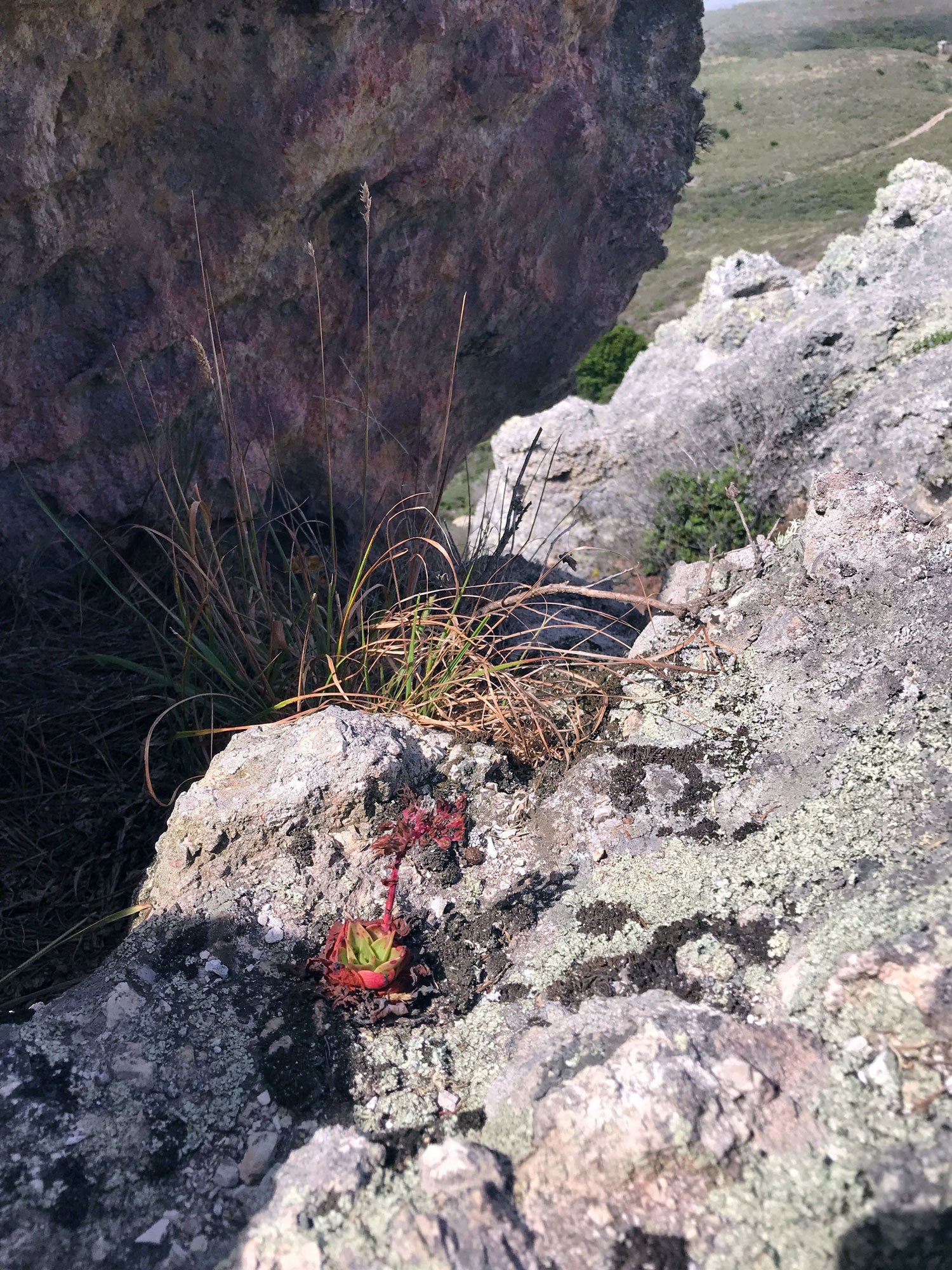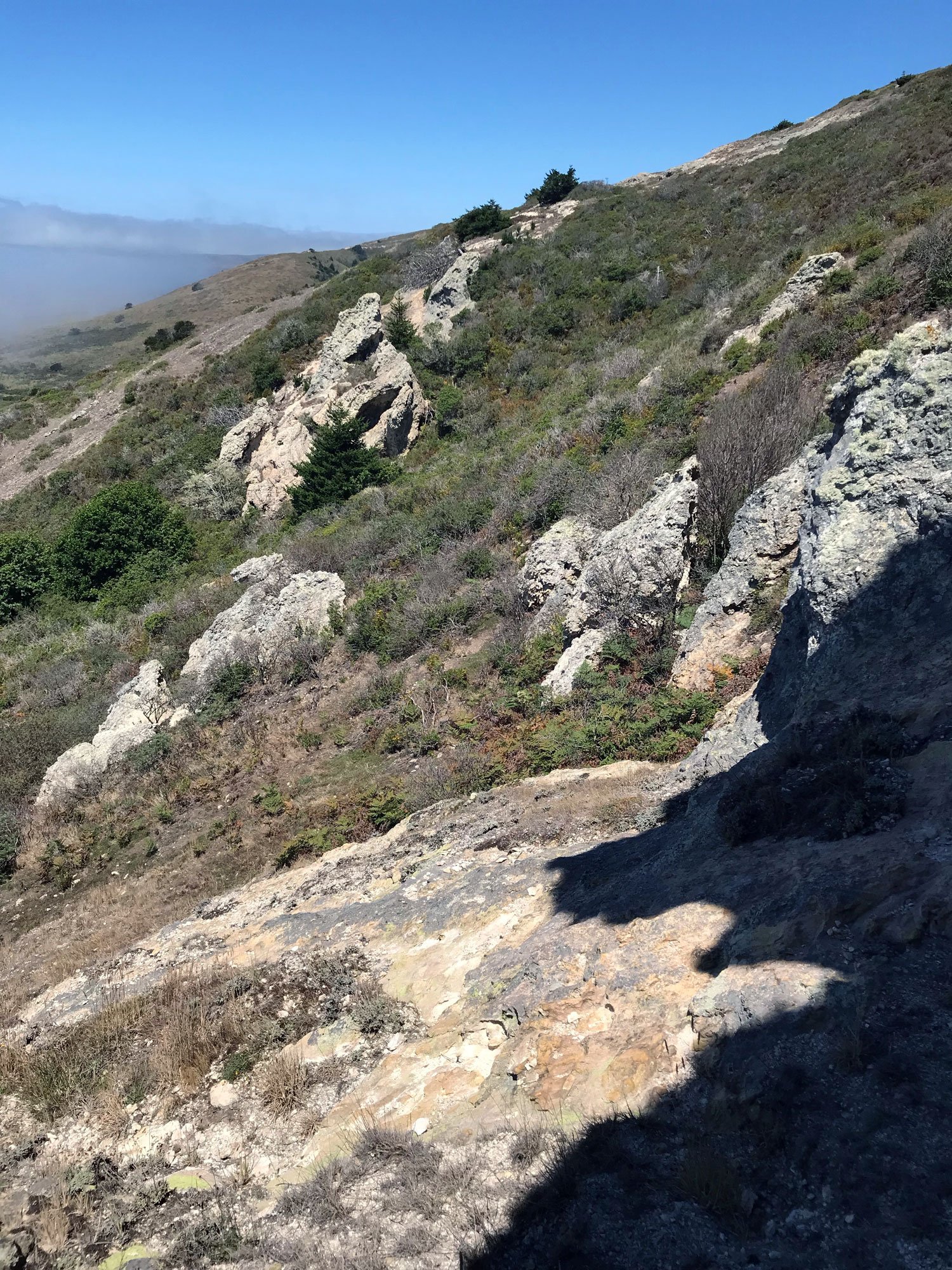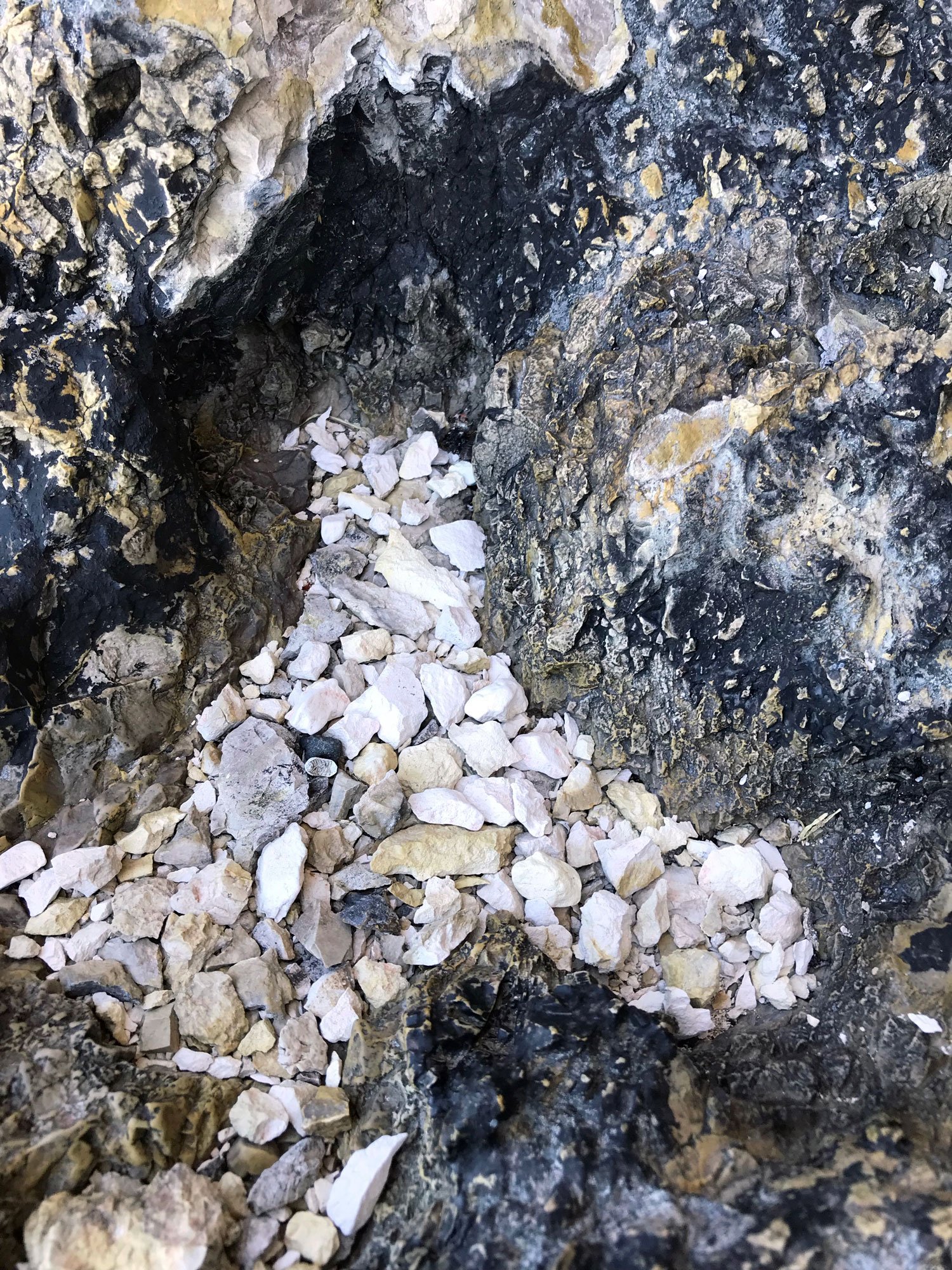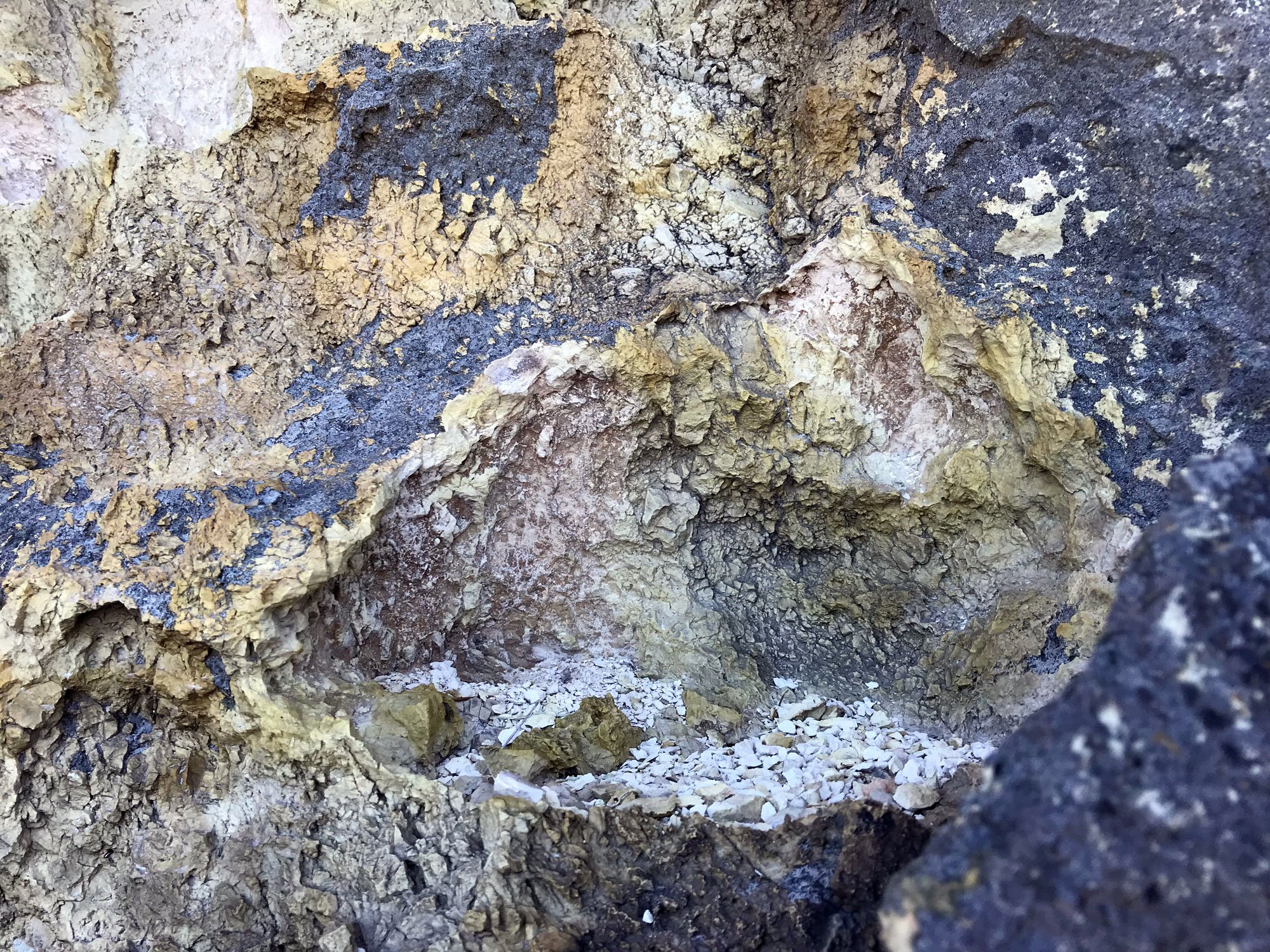The allure of the Coast Trail rocks
For many years the craggy rock formation perched above the Coast Trail beckoned to me like a siren song in the distance. I thought of these sentinel rocks during the Woodward Valley Fire in 2020 and their bird’s eye view of the fire. The time had come to finally explore these rocks.
Starting at the Laguna Trailhead, I counted more than thirty brush rabbits along the way to the Coast Trail via the Laguna and Fire Lane trails. It was a perfect foggy morning. Spider webs draped in bushes along the trail glistened in the mist.
At Coast Camp, I began the hike up the hill and started looking for the rocks but they were hidden in the fog. The fog began to thin out and I discovered a trail leading to the rocks — a narrow dirt path. At first, the path veered to the right, away from the rocks and I wondered if I was on the right path. The fog lifted and I could see the rocks and path more clearly. The path is not difficult to find if you’re looking for it. I was relieved the path was clear and did not require climbing through coyote brush or poison oak. The path snaked up the hill through coastal scrub - coyote brush, gumplant, ceanothus, sage brush, bracken fern, iris, seaside buckwheat and of course some poison oak. A pair of Columbian Black-tailed Deer poked their heads up from the brush and watched me for a few seconds.
After 10 minutes or so, I was at the side of the rocks. For the first time, I could see the tops of the rocks were covered in lichen, possibly Armored Sea-Fog Lichen Niebla homalea. The lichen gave them a fuzzy, greenish appearance.
Lichen-covered rocks
This side of the hill showed remnants of the 2020 Woodward Fire — a few burnt trees among young Douglas firs. From this side of the rocks, the crest of the Sky Trail marked the farthest point to the northeast - the Inverness Ridge. Woodward Valley spread out below covered in green growth.
I worked my way to the back of the rocks, that is, the side facing away from the ocean and found a level area that was a perfect place to have lunch and enjoy the panoramic views. The view at the top of the rocks swept from the Woodward Valley and the crest of the Sky Trail to the coast toward Kelham Beach on the left and toward Coast Camp, Limantour, and as far as Drakes Beach and Chimney Rock on the right.
Panoramic view: Woodward Valley on the left and Coast Camp at the right in the mist. The rocks in the middle are the top of the rock formation.
In addition to the deer, I had the good fortune to meet a Western Fence Lizard. I had hoped to see more lizards but it was still morning and not yet warm enough yet to lure them onto the rocks to gather heat. Much to my amazement, a raven perched on a rock about six feet away from me. The raven seemed to be enjoying the view as much as me.
It was time to explore the rocks more closely. The rocks were multi-colored composed of swaths of pink and green. Upon closer inspection, I realized they were covered in colorful lichen and moss. I climbed around the rocks exploring the lichens and noticing the rock formation’s interesting contours.
I was thankful the rocks weren’t covered in poison oak which is often the case in Point Reyes. Not much was growing on the rocks except a sparce grasses and a few dudleya nestled in rocky outcroppings. The hillside was recovering from the fire and was filled with new growth - bush lupine, trailing blackberry, coyote brush, orange-bush monkey flower, coffee berry, and bracken ferns. I spotted several blue butterflies, possibly Acmon Blue (Icaricia acmon) but they were too busy to pause for a photo. I was charmed by a coyote-shaped shadow on the ocean side of the rocks. Or does it look more like a bear?
As the fog lifted, I noticed a hidden boat in the ocean and marveled at how far I could see along the coast. I watched for whales with binoculars but didn’t spot any which has been the trend for me this past year. As I walked around to the ocean-facing side of the rocks, I noticed many shelf pockets filled with small rocks. The rocks were so similar in shape and size they looked like they had been staged as an art display or perhaps these were the rocky nests of a mythical fire bird.
Exploring the rocks, many questions came to mind that bear further investigation.
Do the rocks have a name? Did the Coast Miwok have a name for them?
What are they made of?
What kinds of lichen live on the rocks?
Why didn’t I find more poison oak?
Why didn’t I find more lizards?
What kind of wildlife would like to hang out in the rocks?
